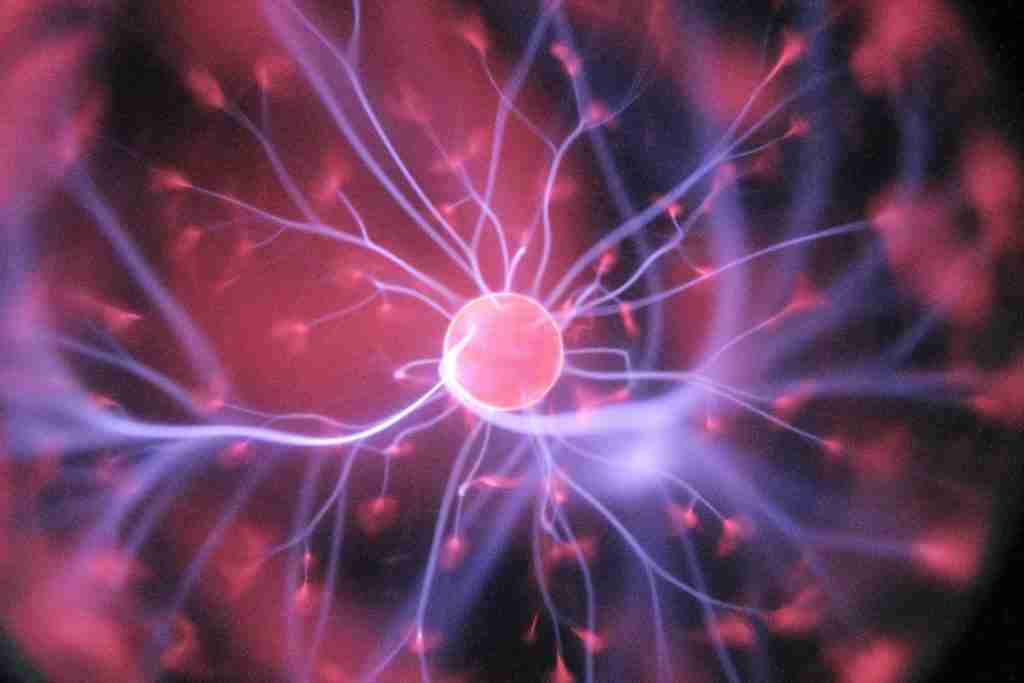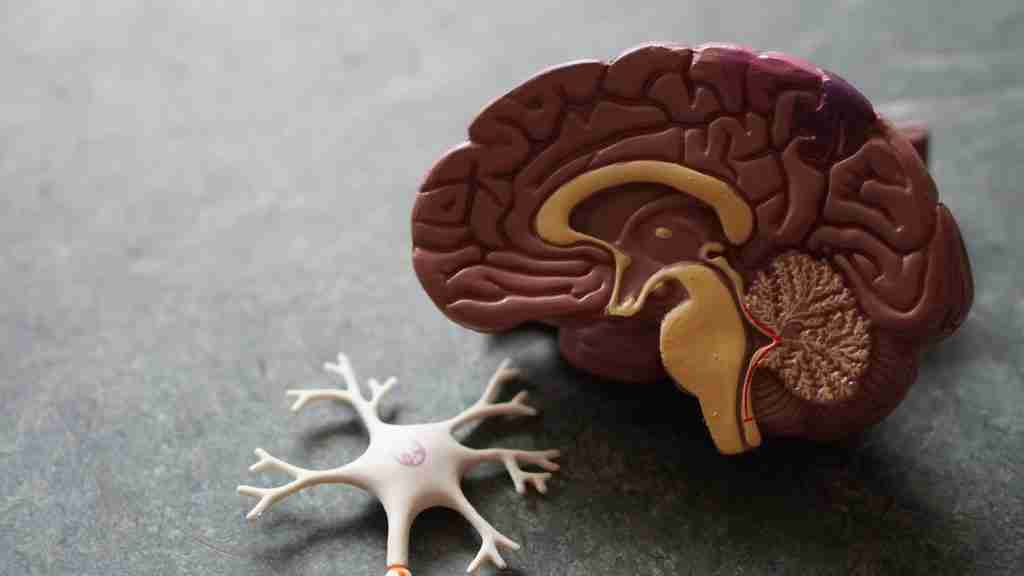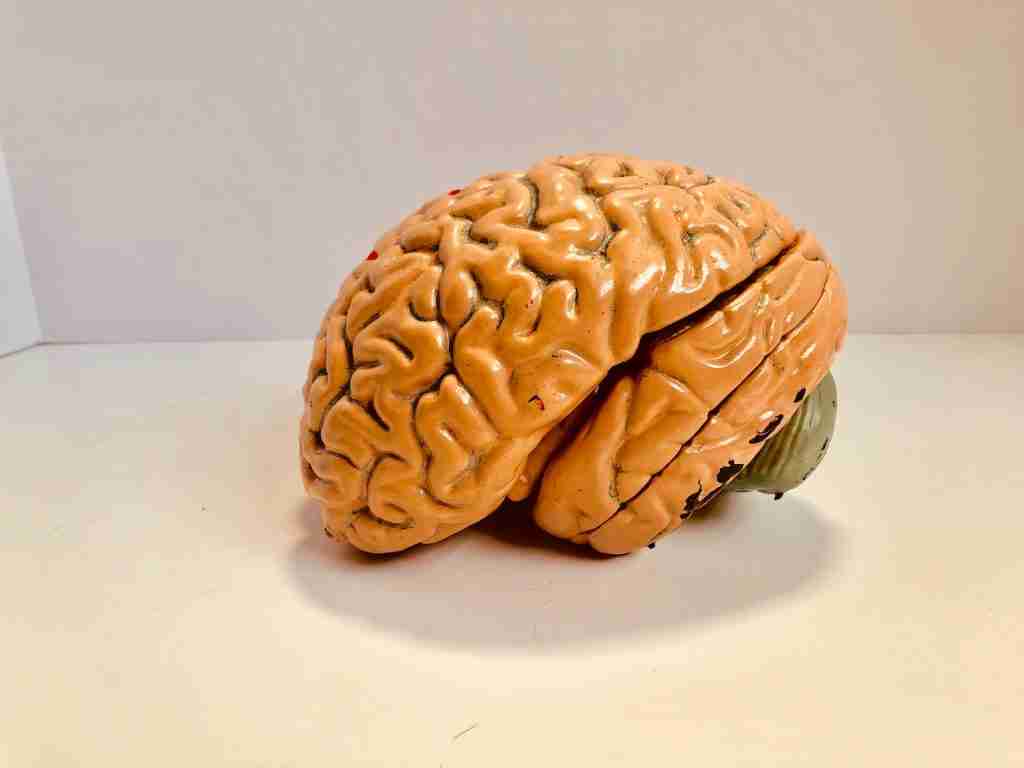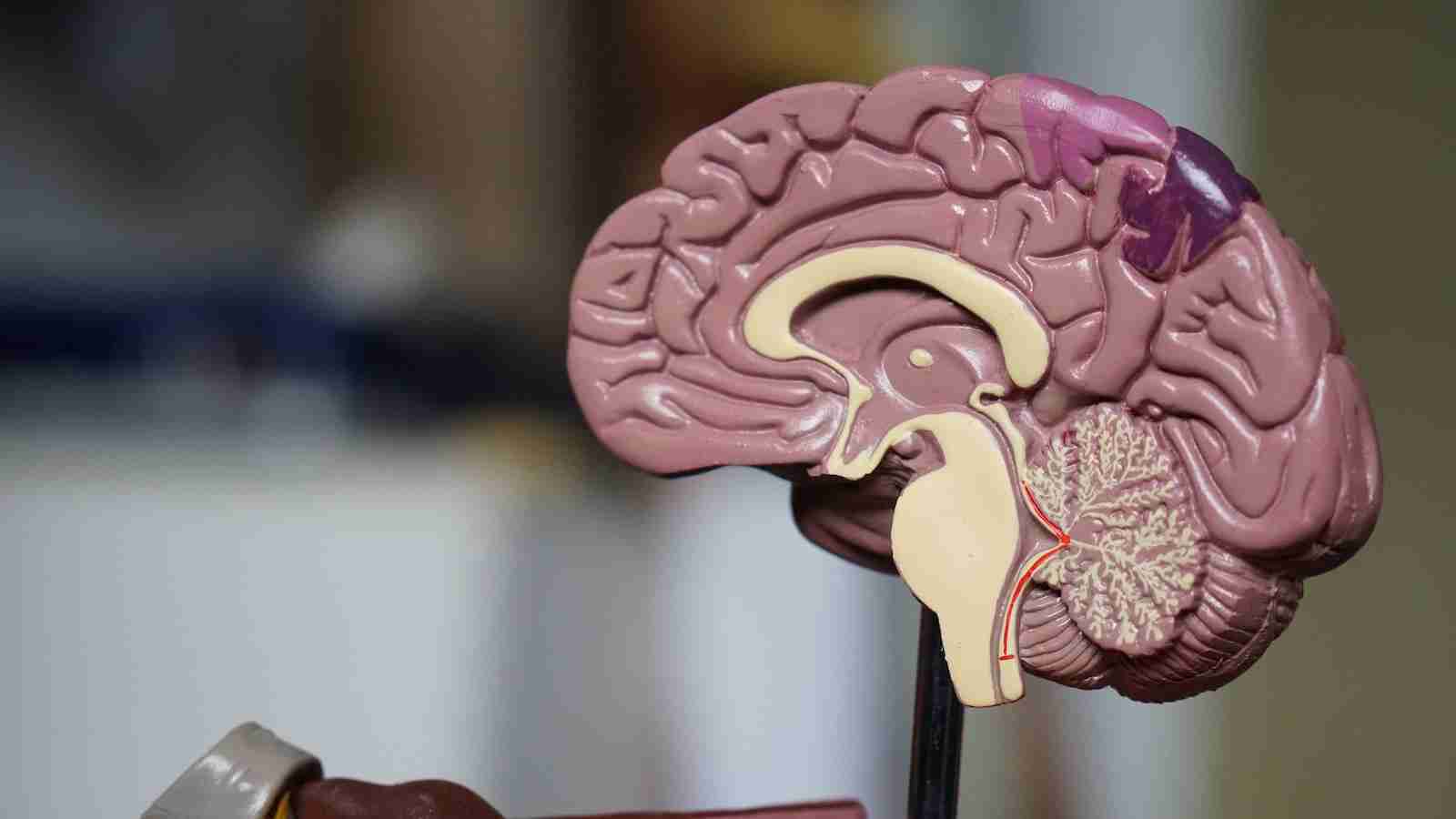26 Fun Facts About the Brain | Mind’s Hidden Wonders
1. The brain accounts for about 2% of a person’s body weight.
The brain might seem small in weight, but it’s mighty in function. It weighs in at just 2% of an individual’s total body weight.
So, if someone weighs 150 pounds, their brain is about 3 pounds. Despite its size, it’s the command center, running the show for every thought and action.
2. Brain activity can generate about 20 watts of electrical power.
Ever thought of the brain as a power source? Well, it kind of is. With all its bustling activity, the brain can produce around 20 watts of electrical power.
That’s enough to power a dim light bulb. It’s continuously working, even when we’re at rest, and this energy helps process countless bits of information every second.
3. A living brain feels like tofu to the touch.
It’s a bit surprising, but if you were to touch a living brain, its texture would remind you of tofu. It’s soft, squishy, and delicate.
This gelatinous mass inside our skulls is responsible for every decision we make, every memory we have, and every emotion we feel.
4. The brain contains approximately 86 billion neurons.

When we talk about brainpower, numbers play a big part. The brain houses roughly 86 billion neurons. These tiny cells communicate and work together to make us who we are.
Every thought, emotion, and action can be traced back to these neurons firing and signaling to each other. It’s a bustling city of activity in there.
5. The brain’s storage capacity is estimated to be equivalent to 2.5 petabytes.
Think of the biggest computer storage system you know, and then think bigger. The brain’s storage capacity is a whopping 2.5 petabytes. To put it in perspective, that’s like stacking over a million gigabytes.
So, if our brain were a digital TV recorder, it could hold 3 million hours of shows, which is one of the fun facts about the Brain. You’d have to leave the TV running continuously for more than 300 years to fill up that much space.
6. Brain neurons can operate up to 200 times per second.
Speed is essential for our brain. Its neurons, the cells responsible for transmitting information, are incredibly swift.
They can fire up to 200 times in just a single second. That’s rapid-fire communication, ensuring our reflexes, thoughts, and decisions are made in the blink of an eye.
7. Brain information travels at speeds of up to 120 meters per second.
If you ever wondered how quickly your brain processes information, here’s an impressive figure. Brain signals can travel at speeds of up to 120 meters per second.
That’s nearly the length of a football field in a single second. It’s this lightning-fast speed that allows us to react to our surroundings without even thinking about it.
8. Brain dehydration can significantly impair attention and long-term memory.

Grab a glass of water, because staying hydrated is vital for your brain. Dehydration can significantly impact how well it works, particularly when it comes to attention and long-term memory.
Even a 2% drop in body water can lead to fuzzy thinking and a slower response time. So, keeping those water levels up is not just good for your body it’s crucial for your brain, too.
9. The brain produces nearly 500 ml of cerebrospinal fluid each day.
Our brains have a built-in cleaning and cushioning system. Every day, it churns out close to 500 ml of cerebrospinal fluid.
This fluid not only acts as a protective cushion around the brain but also helps in removing waste products. Think of it as a daily mini-detox session for our brain, keeping it fresh and healthy.
10. Brain weight in newborns represents almost 10% of their body weight.
When babies are born, their brains are surprisingly big compared to the rest of their bodies. The brain of a newborn weighs almost as much as 10% of its total body weight.
That’s because the early years are crucial for brain development, and it’s growing at a rapid pace. It’s like babies come pre-loaded with powerful hardware, ready to take in the world around them.
11. One of the fun facts about the Brain is that Brain waves can be used to power an electric train set.
The power of the human mind is truly astounding. Those electrical impulses, or brain waves, that our brains produce aren’t just for thinking. If harnessed, they can power an electric train set.
Scientists have demonstrated this, turning our brain’s electrical activity into a cool energy source for toys. Next time you’re deep in thought, imagine powering a little train with your mind.
12. The brain can survive for about 4-6 minutes without oxygen.

Our brains are incredibly resilient, but they have their limits. Without oxygen, the brain can only hold on for about 4 to 6 minutes.
After that, irreversible damage starts to set in, which is why a quick response is crucial during emergencies. Always remember every second counts when it comes to the brain and oxygen.
13. The adult human brain typically weighs about 1.4 kilograms (3 pounds).
Size doesn’t always determine power. Take the human brain, for example. In adults, it weighs around 1.4 kilograms or about 3 pounds.
That’s just a tiny fraction of our total weight. Yet, this small organ controls everything, from our heartbeat to our deepest thoughts and wildest dreams.
14. The brain sometimes sees faces in inanimate objects, a phenomenon called pareidolia.
Ever seen a face in the clouds or a smiley in a random pattern? That’s your brain playing tricks. This quirky behavior is known as pareidolia.
Our brains are wired to recognize faces, so much so that we sometimes spot them in places where they don’t exist. It’s a fun, sometimes spooky, testament to our brain’s powerful pattern-recognition ability.
15. The brain processes images 60,000 times faster than text.
If you’ve ever felt that pictures speak louder than words, you’re onto something. Our brain is built for speed when it comes to visuals. It processes images a staggering 60,000 times faster than it does text.
So, a single glance can convey a whole story. It’s why infographics and emojis are so popular; our brains just love them.
16. The sperm whale has the largest brain of any animal on Earth.
On the topic of impressive brains, let’s talk about the sperm whale. This gigantic creature of the deep holds a record it possesses the largest brain among all animals on Earth.
Weighing in at a whopping 7-9 kilograms, it’s almost five times the size of a human brain. Yet, size doesn’t necessarily correlate with intelligence in the animal kingdom.
17. Brain cells start to form just three weeks after gestation in humans.
The journey of our brain’s development is a mesmerizing one. Just three weeks after gestation, the first brain cells, or neurons, begin to form.
By the time we’re born, we already have most of the neurons we’ll ever have. So, even before a baby takes its first breath, its brain has been hard at work for months.
18. The brain can develop a condition called sympathetic pregnancy.
Here’s a peculiar brain phenomenon some men end up experiencing symptoms of pregnancy. Known as sympathetic pregnancy, or couvade syndrome, these men might undergo weight gain, nausea, and even swelling.
It’s believed to be a psychological response, showcasing the brain’s incredible influence over our bodies and emotions.
19. The brain’s left hemisphere typically controls the right side of the body.
Our brain has a quirky way of operating. For most people, the left hemisphere controls the movements and sensations of the right side of the body, while the right hemisphere manages the left side.
It’s a crisscross system, and it’s one of the many ways the brain keeps us on our toes.
20. Brain size doesn’t correlate directly with intelligence.

Ever heard someone mention the size of a brain about smarts? Well, bigger isn’t always better in this case. While the brain plays a central role in intelligence, its size doesn’t directly determine how smart someone is.
There are tiny-brained animals out there with remarkable problem-solving abilities.
21. Brain injury can sometimes unlock previously undiscovered talents.
The human brain is full of surprises. In some rare instances, people who’ve had brain injuries discover talents they never knew they had.
Whether it’s painting, music, or math, these newfound abilities seem to emerge out of nowhere. It’s a silver lining that demonstrates the brain’s incredible adaptability and resilience.
22. The brain’s composition is about 75% water, which is one of the fun facts about the Brain.
When you think of your brain, you might imagine a dense, complex organ. But did you know that a significant chunk of it is water? Yep, about 75% of its composition is water.
It’s like a super sponge, holding all that moisture while juggling thoughts, memories, and commands. Stay hydrated to keep it humming along.
23. The brain continues to develop and change into your late 20s.
Young adults, listen up. Even if you feel all grown-up, your brain is still evolving. It continues to develop and reshape itself well into your late 20s.
This is especially true for the prefrontal cortex, the area responsible for decision-making and impulse control. So, if you’re in your early 20s and wondering why you’re still a bit impulsive, blame your still-maturing brain.
24. The brain can’t feel pain since it lacks pain receptors.

Ever bumped your head and felt the ache? Well, that pain isn’t coming from the brain itself. Oddly enough, the brain can’t feel pain. It’s devoid of pain receptors. That’s why patients can undergo brain surgery while awake.
The brain interprets pain signals from other parts of the body, but it doesn’t experience it firsthand. Quite the quirky paradox, right?
25. Brain plasticity allows it to reorganize itself after damage.
Our brains are remarkably adaptable. Thanks to a feature known as brain plasticity, or neuroplasticity, our brains can reorganize themselves.
If one part gets damaged, another part can sometimes take over its function. It’s this resilience and flexibility that aids in recovery after injuries or strokes.
26. Brain freeze occurs when cold substances touch the roof of the mouth, triggering a headache.
Ice cream lovers, you might be familiar with this one. A brain freeze isn’t just a quirky name, it’s a short-lived headache. When something cold touches the roof of your mouth, blood vessels constrict and then rapidly dilate, causing sharp pain.
It’s a rapid response from your brain as if it’s saying, Hey, slow down with that cold stuff.
FAQs
Serotonin is a neurotransmitter in the brain commonly associated with feelings of happiness and well-being. It helps regulate mood, appetite, and sleep. An imbalance in serotonin levels can lead to mood disorders like depression.
Brain transplants are not possible primarily because the intricate connections between the brain and spinal cord are too delicate to reconnect. Additionally, the brain is central to our personal identity and consciousness. Immune rejection presents another significant hurdle. Moreover, ethical concerns arise when considering the transplantation of one’s sense of self into another body.
The brain gradually shrinks with age, especially as one enters late adulthood and beyond. This natural decline can start as early as our late 20s or 30s. Factors like chronic stress, excessive alcohol consumption, and neurodegenerative diseases like Alzheimer’s can also accelerate brain shrinkage.
No, a brain freeze, also known as an ice cream headache, is a brief and harmless sensation. It occurs when something cold touches the roof of your mouth, causing blood vessels to constrict and then quickly dilate. This rapid change triggers pain receptors, causing a sharp headache. While uncomfortable, a brain freeze is temporary and poses no risk to your life.
The brain function responsible for illusions is the visual processing system located in the brain’s occipital lobe. Illusions often arise when the brain tries to interpret ambiguous or conflicting information from the eyes, leading to perceptions that may not align with reality. The brain uses context, past experiences, and expectations to make sense of what it sees, sometimes resulting in misinterpretations or illusions.







